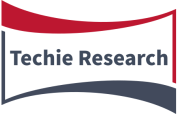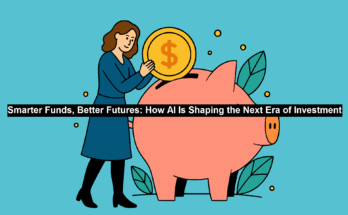It is essential to determine the appropriate backend language to create more effective web applications that are flexible and responsive. As for 2024, the position of backend development remains relatively liberal and diverse, with several languages, each possessing its advantages and specific characteristics and features.
The backend is used in a web application to describe processes within a system, where data is handled, and logic takes place to make the application run properly without the end user knowing. Advancing medical imaging technologies often rely on high-performance backend languages like Python and C++ for processing complex medical images and developing sophisticated AI-powered diagnostic tools. Whether you are developing a new application or seeking to introduce advancements in the existing technology, knowing the best backend languages available in the market is essential.
This guide will focus on analyzing the most used backend language for Web Development in the year 2024. We will describe the significant aspects of both, such as the main characteristics of each, their benefits, and the spheres where they can be used effectively, so you can select which option will suit the project better.
What Is Backend Development?
Backend development is creating the framework, architecture, and functioning of web applications or the middleware of web applications. It’s like a car’s engine: You don’t watch it at work, but everything should function properly.
What Is Backend Development?
Backend development refers to the design and implementation of the back-end elements of an application or site. Here are some:
- Server: The computer that processes user requests and returns data.
- Database: All the data the application owns, such as users’ profiles, content, and other information, is kept.
- Server-Side Languages: Client-side scripting languages that control the actions and processes on the server, including Python, Javascript (Node.js), Ruby and PHP, etc.
Benefits of Backend Development
Efficient Data Management
- What It Means: Backend development ensures the data is well processed, stored, and updated whenever needed. This makes managing user information, contents and all related data much more accessible to integrate.
- Benefit: Users get optimized results through an integrated, fast, accurate data processing system.
Enhanced Performance
- What It Means: It enhances the efficiency in handling and transferring information from the server to the user.
- Benefit: Startup and response time can be significantly improved, improving your web application’s performance.
Scalability
- What It Means: This means that backend systems can be implemented to accommodate large capacity in terms of data and several users.
- Benefit: The application can expand without implications for efficiency.
Security
- What It Means: Backend development requires such security features as those aimed at defending data and preventing its violation.
- Benefit: Preserves information that should not be accessed by anyone, as well as guarantees safety to a user.
Robust Functionality
- What It Means: It handles tasks ranging from identity validation to including processing capabilities within the software.
- Benefit: It permits complex and highly responsive user interactions, including user-specific content and features.
Integration with Other Services
- What It Means: Backend systems can interact with other services and APIs for enhancement.
- Benefit: Let your application depend on other services, such as payment or social networks, to extend its functionality.
Read: Unleashing the Power of Business Intelligence with Microsoft Power BI
Top 5 Backend Languages
The correct back-end language is essential in any web application development to facilitate the development of superior web applications. Leveraging the power of robust backend languages like Ruby on Rails, Node.js, and Python, Shopify development services can create high-performance and scalable e-commerce solutions. Every language is distinct, and the general characteristics of every language make it appropriate for distinct forms of use. Here’s an in-depth look at the top 7 backend languages you should consider: Here is a detailed view of the most valuable 7 backend languages that are out there:
1. Python
On the other hand, Python development is an interpreted language, and it is regarded to be highly non-procedural and to possess evident syntax. It is used in developing software, analyzing data, and automating various processes across industries.
Key Frameworks
Django: A high-level architecture that promotes the fast development of an internal framework and the removal of all gory but practical details. It has additional modules like ORM (Object-Relational Mapping), an authentication module, and an admin panel module.
Flask: A small framework that contains the fundamental elements for website creation and does not force developers to use more of the additional libraries if they do not require them.
Advantages
Ease of Learning: Communicating with Python is effortless, and the language itself is more accessible to master than many other similar languages.
Versatility: Perfect for website design, research, artificial intelligence, and other related computer activities.
Rich Libraries and Community: There are numerous open-source libraries and people who can support and develop efficient solutions to various issues.
Use Cases:
Web application services, web services using REST-conformant APIs, data analytics, and data-based machine learning services:
2. JavaScript (Node.js)
JavaScript, traditionally used for client-side scripting, can run on the server side with Node.js development. Node.js is built on Chrome’s V8 JavaScript engine and allows developers to use JavaScript throughout their entire stack.
Key Frameworks
Express.js: A minimalistic framework that provides robust features for building web and mobile applications.
Koa: A newer framework created by the team behind Express, designed to be more expressive and robust.
Advantages
Unified Language: Use JavaScript for both front-end and back-end development, reducing context switching and streamlining development.
Non-blocking I/O: Node.js handles multiple operations concurrently, making it ideal for real-time applications.
Active Ecosystem: Extensive libraries and a significant community support rapid development and problem-solving.
Use Cases
Real-time applications (e.g., chat apps), RESTful APIs, and single-page applications (SPAs):
3. Java
Java is an object-oriented language used in large-scale applications. It is similar to C++ but portable. It is used extensively in the enterprise environment and large-scale systems due to its stability and expandability.
Key Frameworks
Spring: A powerful application stack for creating robust applications that meet large enterprise requirements and include dependency injection, transactions, security, and many more.
Hibernate: As an ORM framework, it makes working with databases easier because Java objects can be mapped to tables.
Advantages
Platform Independence: Java applications can be executed on any device that supports the Java Virtual Machine or JVM in a cross-platform model called the ‘‘Write Once, Run Anywhere principle.
Performance: Java is designed for high-speed, efficient operation and is suitable even for large projects.
Mature Ecosystem: It should have a rich heritage, the availability of numerous libraries & tools, and documentation.
Use Cases
C, C++, Java, etc., are used in large-scale systems development, the creation of enterprise applications, and Android application systems.
4. Ruby
Ruby is another language of the object-oriented type and is heralded for its elegant language structure and developers’ friendly design. Scaffolding is popularly used with the Ruby on Rails framework and is based on the principle of conventions rather than configurations.
Key Frameworks
Ruby on Rails: A framework supporting the complete stack and embracing the idea of the principle that the majority of applications should have by default; it contains a set of tools for solving various problems regularly encountered by developers.
Sinatra: Rails is a lightweight web application framework that allows you to develop applications quickly. It is suitable for building small applications or microservices.
Advantages
Productivity: Ruby on Rails introduces many predeterminations to the development process to speed it up.
Readable Code: Ruby’s code structure is concise and precise, likely based on a goal to increase developers’ happiness using this language.
Rich Gems: A reliable and extensive system of libraries (gems) that enhance functionality and simplify the development process.
Use Cases
Technology entrepreneurship Uncertainty, web-based businesses, and new product development:
5. PHP
PHP is one of the most popular server-side scripting languages primarily used in web development. They utilize it because of its simplicity of integrating with databases and as the API that fuels famous CMSs such as WordPress.
Key Frameworks
Laravel: A brand new application with built-in stunning features such as a beautiful ORM, routing system, and authentication that assists in building scalable applications.
Symfony: A flexible application architecture of PHP and a confirming set of components and powerful instruments for the creation of a vast web application.
Advantages
Ease of Use: PHP allows easy-to-use syntax, and the documentation that supports it is expansive.
Widespread Adoption: Most websites and applications are created with PHP to guarantee community support.
Cost-Effective Hosting: PHP is supported by most hosting service providers, who usually provide hosting services at a cheaper price.
Use Cases
Dynamic websites (for example, websites created with the help of CMS like WordPress), web applications:
6. C#
C# is a statically typed object-oriented language created in Microsoft and usually associated with the. NET framework. This is mainly used as a performance tool and secure typing system, and it works well with Microsoft applications.
Key Frameworks
ASP. NET: A practical approach used for creating interactive and growing web apps and APIs with robust instruments for web creation.
. NET Core: An open-source web development platform addressing modern Windows/Linux/macOS applications in one web frame.
Advantages
Integration with Microsoft Technologies: Can be easily combined with other Microsoft platforms such as Azure and Microsoft Visual Studio.
Strong Typing: Engenders type-safety and exceptional handling, hence cutting down the number of run-time errors.
Performance: It will likely dash and be highly scalable and suitable for large-scale applications.
Use Cases
Including enterprise solutions, web applications, and Windows desktop applications:
7. Go (Golang)
Golang is one of the newest languages and was developed by Google. Go is a statically typed and compiled language famous for its simplicity, performance, and concurrency features. This is intended to be fast and also very simple to implement.
Key Frameworks
Gin: A web framework that provides good speed and simplicity towards the API for creating web-based applications.
Echo: It is a fast and efficient structuring tool for creating RESTful APIs and web applications.
Advantages
Performance: Go is compiled into machine code, making it fast and with less overhead.
Concurrency: Concurrent programming support is a primary language feature that uses goroutines and channels.
Simplicity: Simple and without many of the frills of a word processor such as Microsoft Word, it is relatively easy to learn and use.
Use Cases
GPU demanding software, tiny services, and parallel structures:
Factors that Need to be Considered When Selecting a Backend Language
- Project Requirements: The FOR can be matched up with the project requirements and characteristics.
- Performance and Scalability: Select a language that optimally works for high traffic and large data volume.
- Ease of Learning and Use: Choose a language your team can quickly learn and employ in the work process.
- Community and Ecosystem: However, you should choose a language with an active community and several libraries and frameworks.
- Integration and Compatibility: Consider how and if the language will mesh and interact with the other systems and technologies already used.
- Development Speed and Productivity: Choose a language that brings about growth and increases efficiency.
- Maintenance and Long-Term Viability: Select a consistent language with active development for better support in handling any issues.
- Cost of Development: Consider the developers’ expenses and the cost of web hosting.
Conclusion
Choosing the best backend language for web application development in 2024 is crucial for developing successful and efficient applications. Selecting the best backend languages for your project depends heavily on the specific needs of your application within the ever-evolving digital space. Every language has its strengths: Python, being easy to read; JavaScript (Node.js), for the full-stack development; Java, for performance; Ruby, for productivity; PHP, for the cost; C#, for the Microsoft ecosystem compatibility; Go, for high performance and concurrency.
When deciding between one and the other, think about the characteristics of your particular project, your performance demands, and your team’s capabilities. Thus, using the correct language for the right project and by hiring dedicated web developer helps make your web application as scalable as it is now while still being easily scalable and maintainable.




